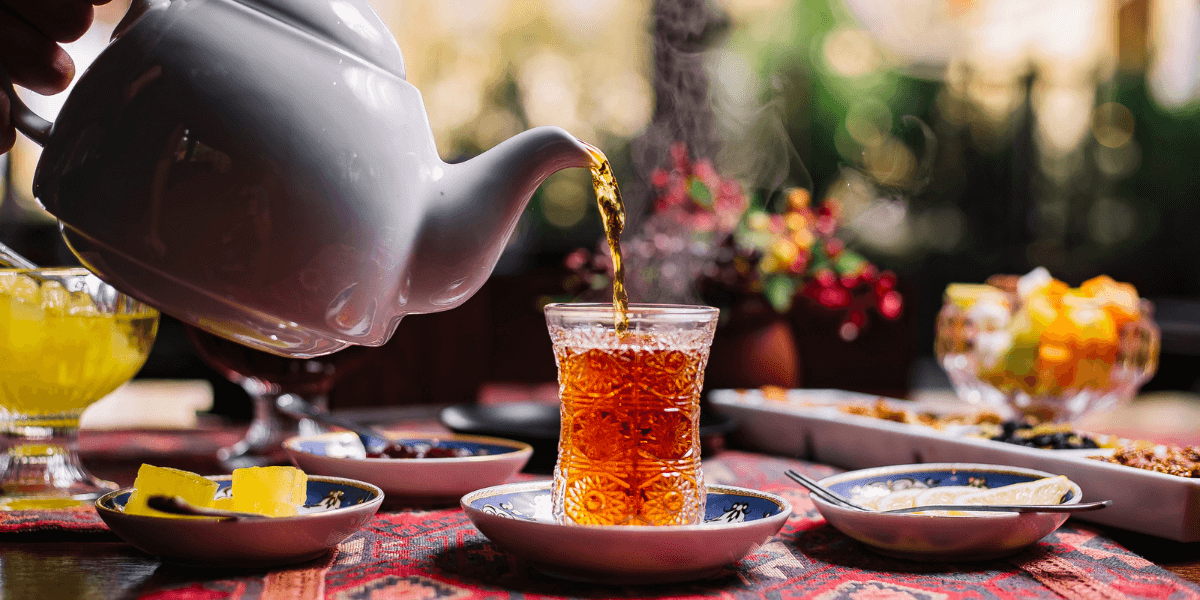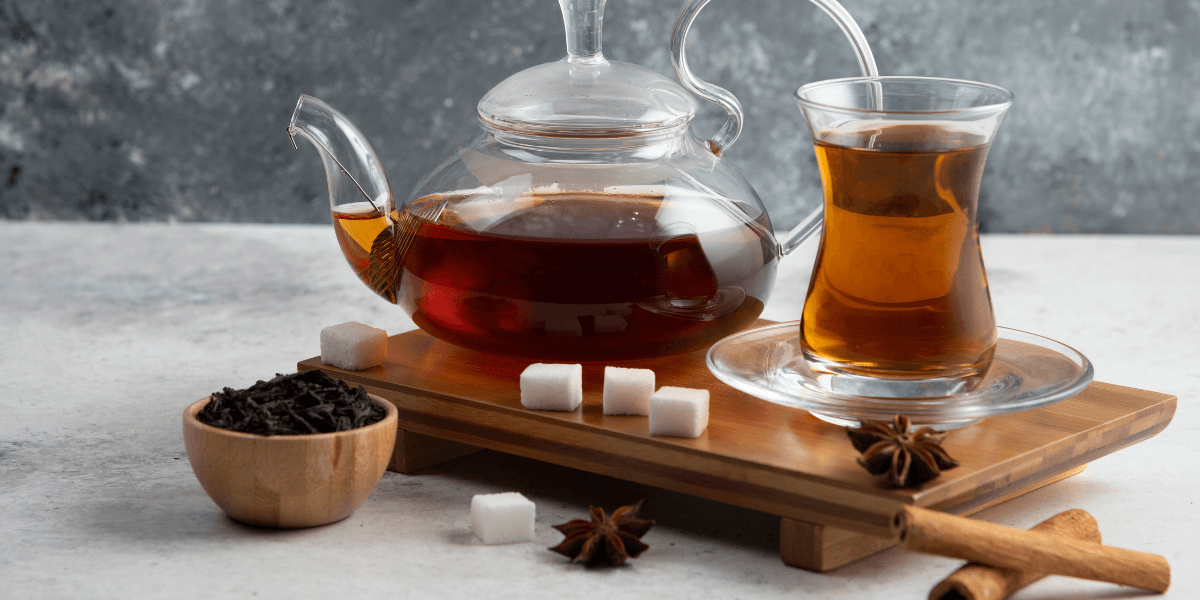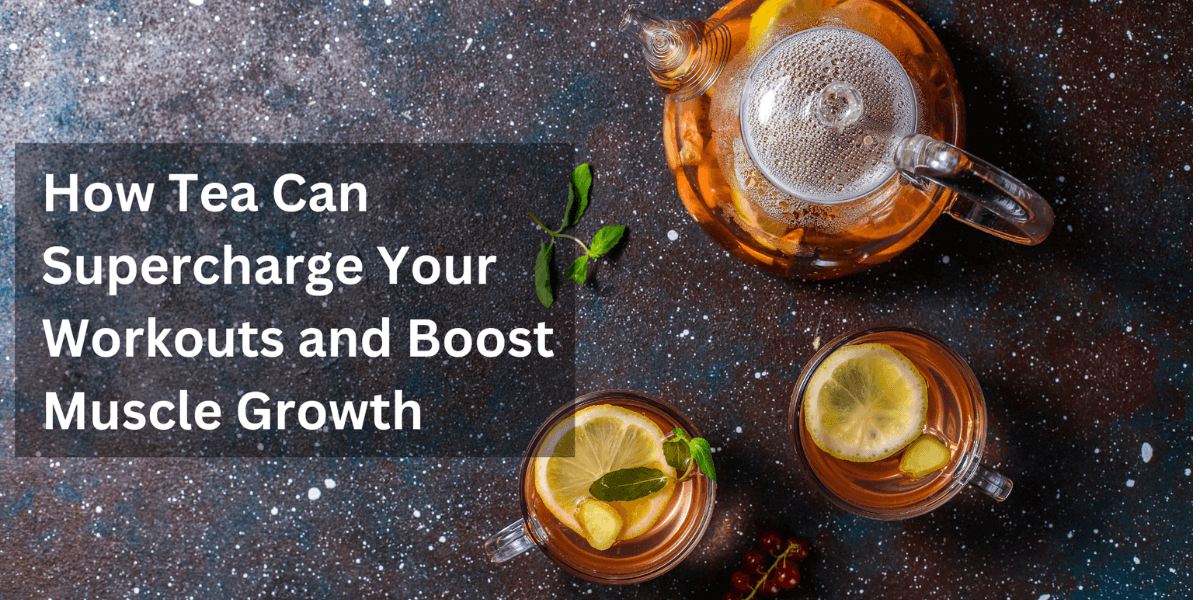Tea Tales: Journey into the World of Tea Making and Brewing
Indulge in a captivating expedition through the enchanting realm of tea, where ancient traditions, intriguing legends, and aromatic flavours intertwine. In this article, we embark on a sensory exploration of the artistry and heritage behind tea making and brewing. From the origins and mythical beginnings of tea to the diverse varieties and flavours, we delve into the rich tapestry that tea has woven throughout history. Discover the time-honoured rituals, the delicate nuances of brewing techniques, and the cultural significance of tea ceremonies around the world. Join us on this delightful journey as we unravel the tales and secrets behind the perfect cup of tea.
The Origins of Tea: Uncovering the Ancient History and Legends
1.1 The Mythical Beginnings: Legends and folklore surrounding the discovery of tea
Tea didn't just appear one day like a magical potion; it has its own legendary origin story. According to ancient Chinese legends, tea was discovered by accident over 4,000 years ago when Emperor Shen Nong, known as the "Divine Farmer," was boiling water under a tree. Some leaves from the tree fell into the pot, and the emperor decided to taste the resulting infusion. Thus, tea was born, along with a whole new world of flavours and caffeinated pick-me-ups.
1.2 Ancient Tea Cultivation: Tracing the earliest tea plantations
Tea cultivation has a long and storied history. The earliest evidence of tea plantations dates back to the 3rd century BCE in China's Yunnan province. From there, tea spread throughout China and eventually made its way across the world. Buddhist monks played a significant role in the dissemination of tea, as they carried tea seeds and knowledge during their travels.
1.3 Tea as a Medicinal Drink: Early uses and beliefs about tea's health properties
Tea was initially used as a medicinal drink, believed to have various health benefits. Ancient Chinese herbalists classified tea as a "cooling" beverage, which was thought to balance the body's energies and aid digestion. Through the ages, tea has been credited with curing ailments, promoting longevity, and even improving mental clarity. While these claims may not have scientific backing, there's something comforting about sipping on a cup of tea and believing it's doing wonders for your well-being.
The Art of Tea Making: From Leaves to Liqueur
2.1 Understanding Tea Leaves: Different types, processing methods, and characteristics
Tea leaves come in a fascinating array of shapes, colours, and flavours. From delicate and unoxidized green teas to bold and fully oxidised black teas, each type has its own unique characteristics. The way tea leaves are processed, including withering, rolling, and drying, greatly impacts their final taste and aroma. So, the next time you brew a cup of tea, take a moment to appreciate the journey those leaves have been on.
2.2 The Tea Making Process: Harvesting, withering, rolling, and drying
Tea making is a complex and intricate process that involves several steps. Firstly, the leaves are carefully plucked from the tea bushes, choosing only the freshest and most tender ones. The leaves then undergo withering, where they are spread out to remove excess moisture. Next comes rolling, where the leaves are gently rolled to release their natural juices. Finally, the leaves are dried, preserving their flavour and longevity. It's a labour of love that results in the delightful beverage we all know and love.
2.3 Tea Grading and Quality: Evaluating the appearance and taste of tea
Just like fine wines, teas can be graded and evaluated for their quality. Tea grading takes into account factors such as the appearance, aroma, and taste of the leaves. Higher grades often indicate superior quality and more nuanced flavours. So, if you ever come across terms like "Silver Needle," know that you're in for a potentially extraordinary tea-drinking experience.
Exploring the Different Types of Tea: Varieties, flavours, and Characteristics
3.1 Green Tea: Fragrant and refreshing with a range of flavours
Green tea, with its vibrant green hue and grassy flavours, has become a staple for many tea enthusiasts. Whether you prefer the light and floral notes of a Japanese Sencha or the slightly nutty taste of a Chinese Dragon Well, there's green tea for every palate. Plus, it's been said that green tea is filled with antioxidants, so you can sip guilt-free.
3.2 Black Tea: Bold and robust, with diverse regional variations
If you're looking for a bolder and more robust flavour, black tea is your cup of tea. Known for its rich, dark colour and full-bodied taste, black teas like Assam, Darjeeling, and Earl Grey are beloved around the world. With regional variations and the addition of natural flavourings, black tea offers an endless array of options to satisfy any tea lover's cravings.
3.3 Oolong Tea: Semi-oxidized tea with a wide spectrum of flavours
Oolong tea strikes a perfect balance between green and black tea. With its partially oxidised leaves, oolong teas offer a diverse range of flavours, from the floral and fruity to the toasty and nutty. From the famous Tie Guan Yin to the lesser-known Taiwanese Dong Ding, oolongs offer a delightful adventure for your taste buds.
3.4 Herbal Infusions: Caffeine-free options with various health benefits
For those seeking a tea experience without caffeine, herbal infusions are the answer. Herbal teas, often made from flowers, herbs, and fruits, offer a variety of flavours and health benefits. Whether you're sipping on a calming chamomile before bed or enjoying a refreshing hibiscus iced tea on a sunny day, herbal infusions bring a world of relaxation and well-being in every sip.
The Ritual of Tea Brewing: Techniques, Tools, and Traditions
4.1 Tea Brewing Essentials: Teapots, infusers, and other necessary tools
To brew the perfect cup of tea, having the right tools is essential. From teapots and infusers to tea timers and temperature control kettles, there's a whole world of tea brewing gadgets to explore. But remember, even a simple cup and a strainer can do the job just fine. It's the love and attention you put into the process that truly matters.
4.2 Water Temperature and Steeping Time: Achieving the perfect flavour and aroma
Getting the water temperature and steeping time right is key to unlocking the full flavour potential of your tea. Delicate green teas often require lower temperatures and shorter steeping times, while heartier black teas can handle boiling water and longer infusions. Experimenting with different temperatures and times can lead to your own customised cup of perfection.
4.3 Traditional Tea Ceremonies: A glimpse into tea rituals around the world
Tea time is not just about the beverage itself; it's a moment to pause, reflect, and connect with oneself and others. Around the world, various cultures have their own tea ceremonies, each with its own unique traditions and rituals. Whether it's the elaborate Japanese tea ceremony or the laid-back British afternoon tea, these customs remind us of the power of slowing down and savouring life's simple pleasures. So, next time you pour yourself a cup, take a moment to appreciate the centuries of tradition and the countless souls who have shared in the joy of tea.
Unlocking the Health Benefits: Tea as a Beverage for Wellness
We all know that a cup of tea can be comforting, but did you know it can also be beneficial for your health? Tea is packed with antioxidants that help fight free radicals, those pesky little molecules that can damage our cells. So, next time you reach for a cuppa, know that you're also doing your body a favour in the battle against ageing and chronic diseases.
Boosting the immune system is another perk of incorporating tea into your daily routine. Certain types of tea, like green tea, have been found to have immune-boosting properties. So, the next time you feel a cold coming on or just want to stay healthy, reach for a cup of tea instead of that over-the-counter vitamin C tablet.
If stress is your constant companion, tea can be your new best friend. Many teas, like chamomile and lavender, have calming properties that can help alleviate stress and promote relaxation. So, brew yourself a cup, sit back, and let the worries melt away.
Tea Culture Around the World: From Ceremonies to Social Settings
Tea is not just a beverage; it's a whole culture in itself. From the elaborate tea ceremonies in Japan to the cosy tea time gatherings with friends, tea has a special place in different societies around the world.
In Japan, tea ceremonies are highly ritualised and represent a balance of beauty, harmony, and tranquillity. It's a mindful practice that brings people together and allows them to appreciate the simplicity of life.
Tea time with friends is a popular social activity in many countries. Whether it's the British tradition of afternoon tea or the Indian chai sessions, tea serves as a catalyst for conversation and connection. So, next time you have friends over, invite them for a cup of tea and let the magic of bonding unfold.
Speaking of afternoon tea, the British are known for their love affair with this tradition. From the delicate sandwiches and scones to the clinking of teacups and the sound of laughter, afternoon tea is a delightful experience that brings a taste of elegance to any day.
From Leaves to Brew: Understanding the Different Types of Tea
When it comes to tea, there's a whole world of flavours waiting to be explored. Black tea, with its bold and robust taste, is a favourite among the tea connoisseurs. It's the kind of tea that can wake you up in the morning and keep you going throughout the day.
On the other hand, green tea is favoured by those who prefer a fresher and lighter taste. Known for its health benefits, green tea is often praised for its high antioxidant content and potential metabolism-boosting properties.
If caffeine is not your cup of tea (pun intended), herbal infusions might be the perfect choice for you. With a wide variety of flavours, from soothing chamomile to zesty peppermint, herbal infusions offer a caffeine-free alternative that can satisfy any palate.
The Perfect Brew: Tips and Techniques for Brewing a Great Cup of Tea
Brewing a great cup of tea is an artform in itself. To achieve the perfect brew, you need to consider factors like the right temperature, steeping time, and even experimenting with flavours.
Different types of tea require different water temperatures for optimal flavour extraction. For example, black tea usually benefits from boiling water, while green tea prefers a slightly lower temperature to avoid bitterness. So, pay attention to those numbers on your kettle or invest in a good thermometer to unleash the true potential of your tea leaves.
Steeping time is another crucial factor in brewing tea. Too short, and your tea might lack flavour; too long, and it can become bitter. It's a delicate balance that may require some trial and error to find your personal preference.
Don't be afraid to get creative with your tea. Experiment with adding a slice of lemon or ginger to give your cuppa a refreshing twist. Or maybe a drizzle of honey for a touch of sweetness. The possibilities are endless, and the unique flavours you can create are limited only by your imagination.
So, whether you're sipping tea for its health benefits, immersing yourself in tea culture, exploring different types of tea, or perfecting your brewing skills, remember to take a moment to enjoy the journey. After all, a cup of tea is not just a drink; it's a moment of tranquillity, connection, and self-indulgence in this chaotic world we live in.As we conclude our journey into the world of tea making and brewing, we are left with a renewed appreciation for the beauty and complexity found within each cup. From its mythical origins to the meticulous art of brewing, tea has captivated our senses and connected us to cultures across the globe. Whether enjoyed for its health benefits, shared in social settings, or savoured in moments of tranquillity, tea continues to enchant and inspire. So, let us raise our cups and toast to the timeless charm of tea, and may it continue to bring warmth, comfort, and delightful moments to our lives. Cheers!





